
Good Hope Mill
Cumberland Co. | Pennsylvania | USA
Watersource: Conodoquinet Creek.
Good Hope Mill
Exit I-81, southbound onto the Harrisburg Expy/Pa 581. Take Crestview Road east to Good Hope Road. Turn right then right again on Mill Road(dead end). The mill is down around the corner on the left. Can also take Good Hope Road south from a point midway between Enola and Wertzville.

*Update: The mill was built by Jonas and Elizabeth Rupp in 1821 and is one of four brick grist mills still standing in the county. The eave walls of the mill have been covered by additions, but the mill dam remains intact. Robert T. Kinsey 07/14/2008* There have been two steel and block buildings built on either side several years ago, it was once a shop and ware house for Kitchen Savers which is no longer in business.
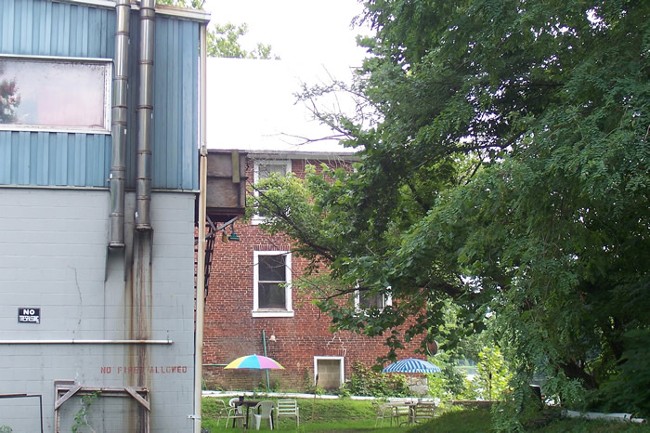
*Update: From an account book detailing the mill's transactions from April 5, 1826 to May 18, 1826, it is known that David Kremer was the miller and that at least for this brief period, the mill produced mostly super-fine wheat flour for local farmers. A family genealogy credits Jonas Rupp as the owner of a "fine grist mill" and that "his ruling passion was to build houses and mills." Robert T. Kinsey 07/14/2008* A view of the north side of the mill structure, apparently a domestic residence.
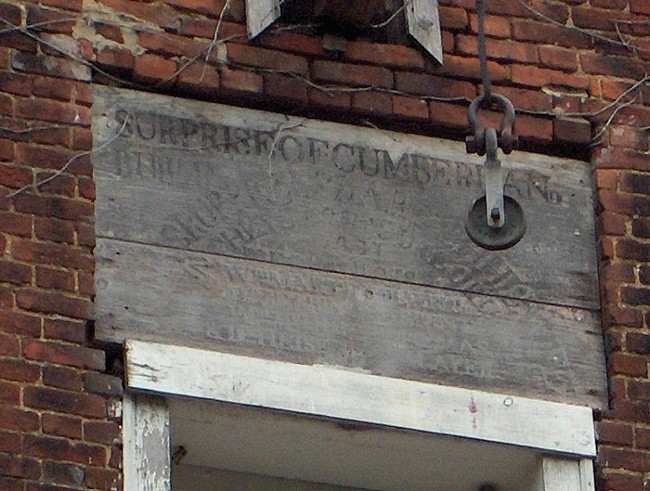
The plaque at the very top of the building, above 4th floor door. It is very hard to read the once painted letters. Surprise of Cumberland. The date is hard to read as are the other names on the placque.
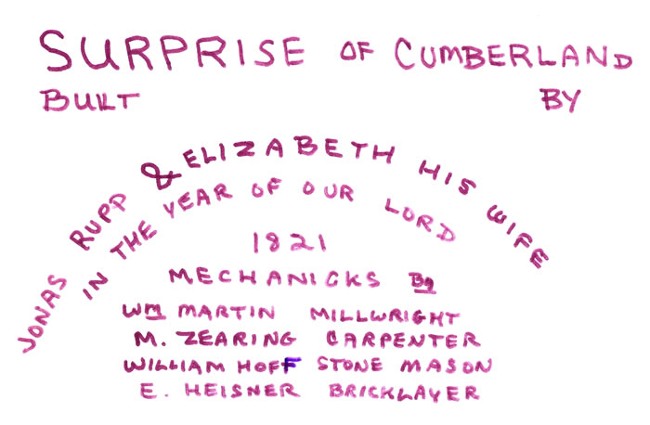
This is a hand drawn replica of the date signboard froom the last photo. It was drawn up using new information cooresponded to the old info. in the above photo. *Update: His pride in the mill is reflected in the building's date stone which bears his name, his wife's and most remarkably, the names of those responsible for the mill's construction: William Martin, millwright; M. Zearing, carpenter; William Hoff, stone mason; and E. Heifner (Heisner), bricklayer. The Good Hope Mill is the only mill in the county for which the name of the millwright is known. Robert T. Kinsey 07/14/2008*
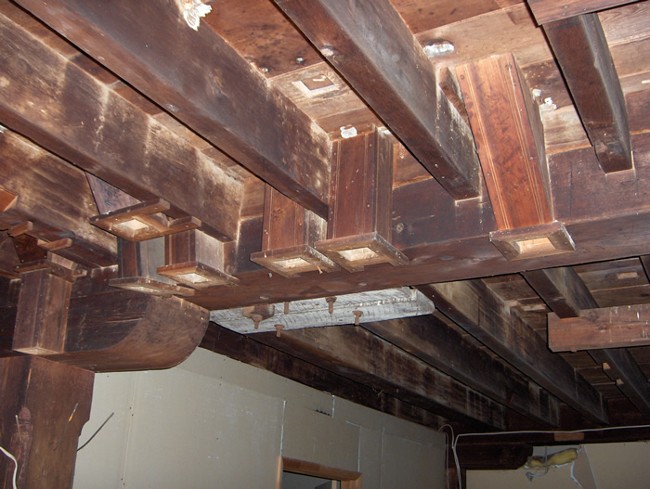
Grain chutes capped off, that extend from the floor above, capped off on the second floor from the third floor. Some other chutes are there, including one with a two-way handle to direct the grain flow.
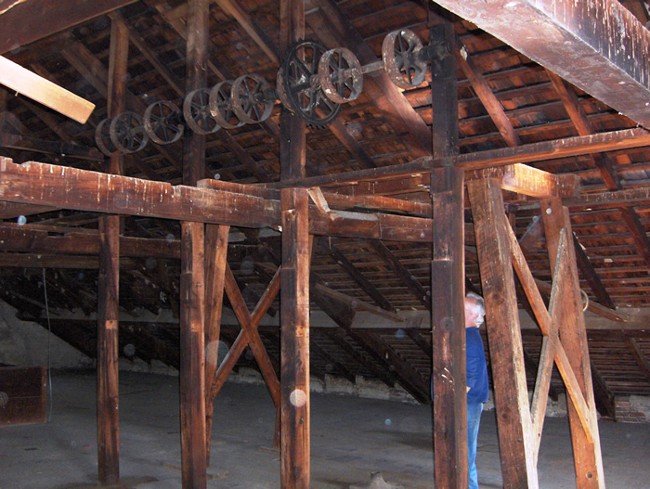
Lineshafts located on the upper floor of the mill towards the roof.
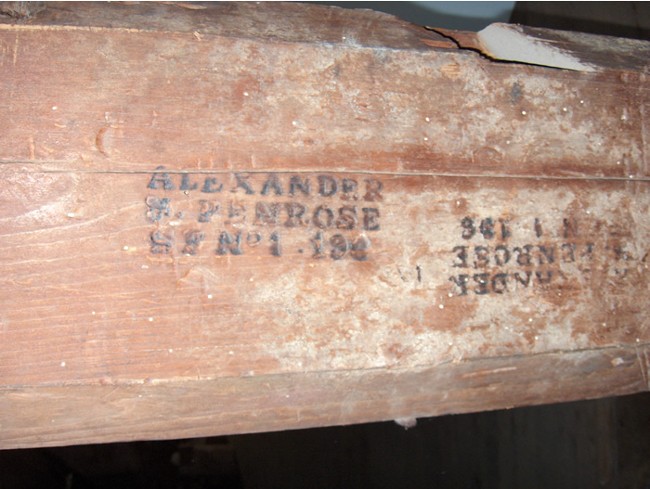
A support post on the second floor with a name and number burned into the surface. Could it be one of the builders names. Post is displayed horzontally here for reading purposes. Some other names on posts are besides "Alexander F. Penrose"; "J. Rupp Spline No. 2196" and "J. Haldeman"

*Update: My long time friend Bill Foshag has something very similar in the basement of his mill burned into the fireplace wooden mantle. For a long time he thought it talked about the date of the mill construciton "...796." I showed him a barrel head branding iron that showed on it "SF 196." which meant "Superfine flour 196 pounds" which was required by law. They heated branding irons in basement fireplaces for labeling the barrel heads. George Washington's mill said, "GW196," and Thomas Jefferson"s mill said, "TJ196." The beam in the "Good Hope Mill" means to say, "SF No.1 . 196" (pounds!) "Alexander F. Penrose," "J. Rupp Spline and "J. Haldeman," are the names of the owners of the mill who put their name on the barrels of flour with a branding iron. They were not big names like Washington or Jefferson so they had to use their full names to identify whose flour it was. Later they used tin stencils, and afterwards they used paper round labels (16 inches in diameter which is also the diameter of a barrel head) which were glued on. Then 100 weight sacks became the standard shipping and means of measuring a mill's output rather than how many barrels of flour they could produce in a day. Ted Hazen of Pond Lily Mill Restorations 07/18/2008*
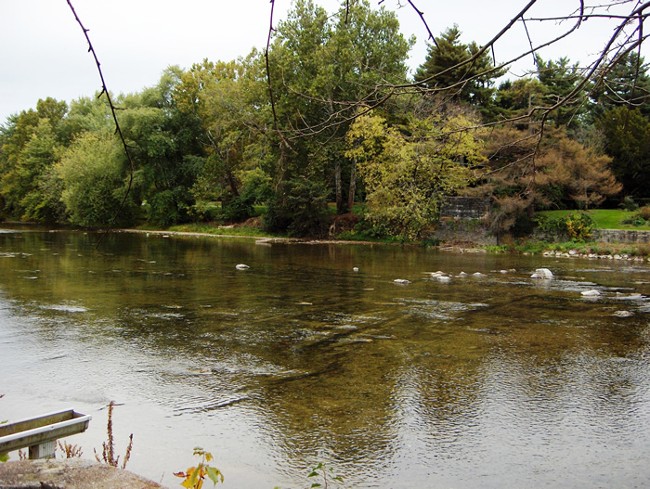
The remains of bridge abutments that are said to have been a covered bridge crossing of the Conodoquinet Creek from Mill Road to Terrace Road. This view looks towards Terrace Road across the creek.
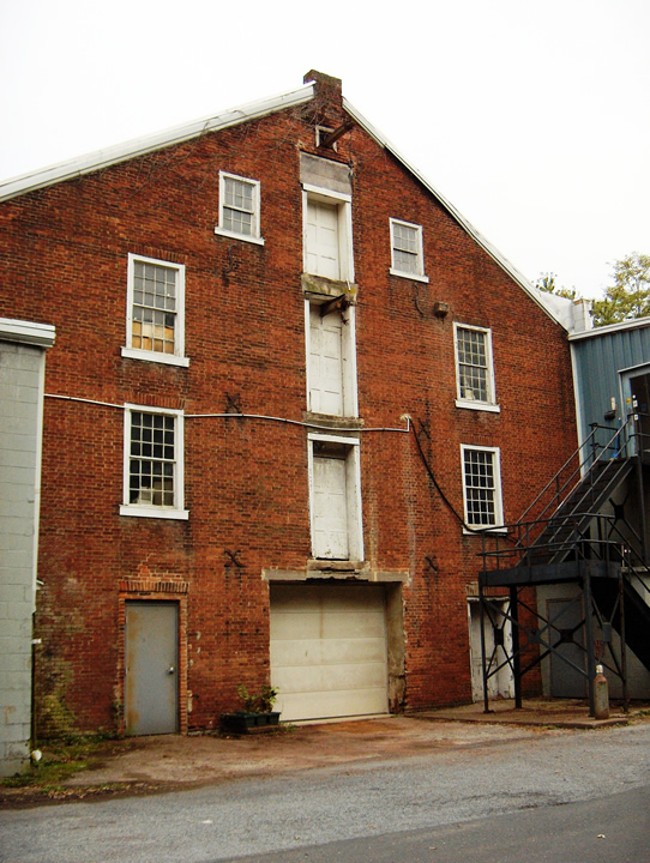
The main mill building front without all the added structure of Kitchen Savers.